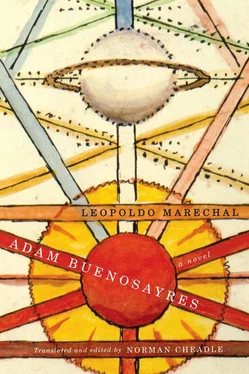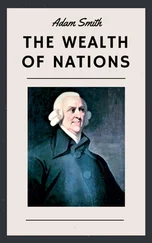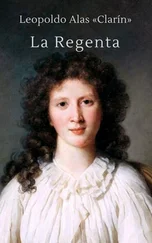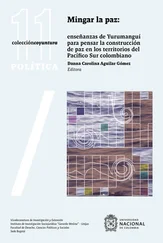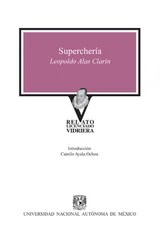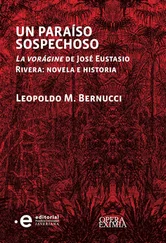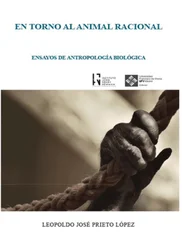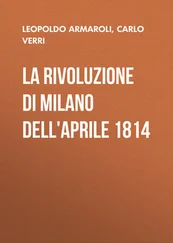16 Adam’s quotation from the Critias is more or less accurate, and according to Plato’s text the white, black, and red stone was indeed used to construct docks.
BOOK FIVE, CHAPTER 2
1 San Luis de la Punta de los Venados: the complete name of the capital city of San Luis Province, in the interior of Argentina.
2 As Navascués ( AB 436n) notes, the Principal has apparently been named for the Swiss educator Johann Heinrich Pestalozzi (1746–1827); inspired by J.J. Rousseau’s Romanticism, Pestalozzi set down the modern principles of modern education on the premise that human nature is essentially good.
3 Domingo Faustino Sarmiento’s autobiography Recuerdos de provincia (1850) recounts in the chapter “Mi educación” a street fight between two gangs of schoolboys headed up respectively by Barrilito and Chuña (Barcia 586n).
4 The Basílica de Nuestra Señora de Buenos Aires located at Gaona 1730 in the barrio Caballito, is dedicated to the Virgen de los Navegantes [Virgin of the Mariners], originally the Sardinian Madonna di Bonaira, to whom Pedro Mendoza in 1536 dedicated the settlement of Santa María del Buen Aire. The statue described by Adam, in which the Virgin holds a ship in her right hand and the baby Jesus in her left, dates from 1897.
5 In Greek mythology, Bellerophon rode the wingèd horse Pegasus. After killing the monster Chimera, he tried to fly to Mount Olympus, but was stymied and punished by Zeus for his presumption.
6 La Grande Argentina (1930) was the title of Leopoldo Lugones’s nationalist essays. His concept of the Great Argentina took as its model Mussolini’s Italy, which he considered to be reviving the senatorial system of ancient Rome. As pointed out by Enrique Zuleta Álvarez (143–4), Lugones’s philo-Fascist nationalism was somewhat contradictory, in that he favoured economic development through British capital investment. Such development was the basis of the hegemonic liberalism opposed by both Catholic nationalism and left-wing nationalism.
BOOK FIVE, CHAPTER 3
1 “Las doce campanadas eran doce mochuelos: / Alguien abrió la puerta de la torre, y huyeron.” First two lines of Marechal’s poem “Noche de sábado” [Saturday Night] in Días como flechas (1926) ( OC I, 95 ).
2 The poem “Noche de sábado” continues: “¡Igual que un trompo bailará de tu punta / tu corazón nocturno” [Just like a top your heart will dance on end like a top]. Adam’s image looks like a variant on this one.
3 The three images in quotation marks cited by Adam are all verses from Marechal’s “Poema de veinticinco años” [Poem on Turning Twenty-Five Years Old] in Días como flechas (1926). The first stanza reads: “La tierra es un antílope que huye / sobre deshilachados caminos de aventura. / — ¡Salve, moscardón ebrio / girando en el más fuerte mediodía de sombra! / — Mundo, piedra zumbante / de los siete colores…” ( OC I, 89).
4 “Viernes Santo, Viernes Santo, / día de grande Pasión.”
5 “Página eterna de argentina gloria, / melancólica imagen de la patria.” The first verses of the patriotic poem by Juan Chassaing (1839–1864), minor poet, as well as Unitarian soldier and politician. Children ritually recited the poem in Argentine schools.
6 “Un automóvil, dos automóviles, / tres automóviles, cuatro automóviles.” The ditty continues up to seven automobiles “y un autobús” [and one bus]. According to Marechal (Andrés 21), this was the “anthem” of the magazine Martín Fierro , composed as a joke by Oliverio Girondo and sung to the melody of “La donna è mobile” [Woman is Fickle, from Verdi’s opera Rigoletto (1851)].
7 “Parece que van cayendo / copos de nieve en tu cara.” Marechal has inverted the first two verses of a traditional Spanish requiebro [song of seduction] put to popular music: “Copos de nieve en tu cara / Parece van cayendo: / Mientras más te voy mirando / Mejor me vas pareciendo” (Rodríguez Marín, item 1295).
8 “Dans une tour de Nantes / y avait un prisonnier.” Traditional French song, still popular today, which properly begins: “Dans les prisons de Nantes / y avait un prisonnier.” Often confused, as in Marechal’s text, with a another song that begins: “Dans une tour de Londres / y avait un prisonnier.”
9 Anaximander (see 631n14).
10 Anaximenes (d. 528 BCE) is known for his doctrine that air (Greek pneuma , “wind, breath, spirit”) is the source of all things. In medieval philosophy, the term came to be mean breath of God or Holy Spirit. The medieval Latin form neuma signified as well a musical structure in plainsong, consisting in a prolonged phrase or group of notes sung to a single syllable, usually at the end of a melody.
11 Luján is a town not far west of Buenos Aires. Nuestra Señora de Luján is considered to be the patron saint of Argentina.
12 Barcia (612n) points out the intertextuality between this passage and Marechal’s “Cortejo,” from Poemas australes (1937), in which the deceased is a woman: “la cabeza yacente, sacudida en el viaje, / traza el signo de ¡no!” ( OC I , 190) [the prone head, jouncing back and forth in the journey, traces the sign of No!].
13 Allusion to Matthew 18:3. In the King James Version: “Verily I say unto you, Except ye be converted, and become as little children, ye shall not enter into the kingdom of heaven.”
14 Ramon Lull (1232–1315): philosopher, Franciscan monk, and first major writer in the Catalan language. His most famous work is the Ars generalis ultima or Ars magna (1305).
15 Navascués ( AB 464n) finds in the novel’s original manuscript a revealing paragraph that has been suppressed in the published novel: “Names of women [crossed out: that bring disturbing testimony to his conscience]! Herminia, Zulema, Rosa! Irma, in her happy humility (and he’d told her eyes were like two mornings together). Why, what for? When he already knew the sad game and abominated it? But behind Irma arises, suddenly, a figure — terrible Eumenides” [my translation].
16 The Eumenides (the Furies) is a Greek tragedy by Aeschylus. The Furies are to judge Orestes for murdering his mother Clytemnestra; Marechal has apparently conflated the Furies into a single figure.
17 Navascués ( AB 466n) finds a much longer sentence in the original manuscript: “I am sick to death of empty [unreadable word], of sterile and proud literature. I renounce the art that made me what I am now, and I offer myself to your art so that you may make me what I ought to be [crossed out: if I can still be anything], if it isn’t already too late” [my translation].
18 Like the hobo of the Dirty Thirties in North America, the image of the linyera (hobo, tramp) became in the década infame a fixture in the Argentine imaginary. Enrique Larreta’s play titled El linyera (1932), in which a tramp suddenly appears and alters the lives of the villagers, was a popular success (a film version was directed by Larreta and Mario Soffici in 1933). Larreta’s character reflects the figure’s dual aspect — on the one hand, a frightening outsider, morally suspect; on the other, a wise messenger.
19 The “Someone” who lays down his arms is likely an allusion to the Knight Faithful and True in Revelation 11:19.
BOOK SIX, “THE BLUE-BOUND NOTEBOOK”
1 In the original: “El Cuaderno de Tapas Azules” [The Notebook with Blue Covers]. The colour azul in Spanish connotes the spiritual (similar to “azure skies” in English) but also, in Hispanic literature, aestheticism and the cult of beauty. The great modernist poet Rubén Darío (1867–1916) titled his most famous book Azul (1888). The chief literary model for Adam’s Notebook, both in substance and poetic language, is the Vita nuova , Dante’s courtly/mystical/devotional account of his love for Beatrice. The oneiric visions of the Notebook recall not only Dante ( Vita nuova , chapters III and XII) but the cosmology of Plato’s Timaeus .
Читать дальше
